Cells, Cells and More Cells!

This module allows students to learn about one of the most basic units of life-the cell! In this activity students will learn that the cell is made of many parts that all have a special job to do. Then, students will have the option to make a model of a plant or animal cell.
After this module you will be able to:
- Identify different parts of animal and plant cells.
- Distinguish the differences of both cells within various organisms and their functions.
- Grade 6.12(A): Understand that all organisms are composed of one or more cells
- Grade 6.12(B): Recognize that the presence of a nucleus is a key factor used to determine whether a cell is prokaryotic or eukaryotic
- Grade 7.12(D): Differentiate between structure and function in plant and animal cell organelles, including cell membrane, cell wall, nucleus, cytoplasm, mitochondrion, chloroplast, and vacuole
- Grade 9.4(A): Compare and contrast prokaryotic and eukaryotic cells, including their complexity, and compare and contrast scientific explanations for cellular complexity
Materials
- Print student handout. You may choose to print this student handout to help you record the materials you use for your cell.
- (1) Section Cardboard 8”x12”, a Blank Sheet of Paper, or Sheet of Notebook Paper
- 3 feet of Yarn, 3 feet of Thick String, or Three Shoelaces
- (1) Blue Bouncy Ball, (1) Small Blue Circle cut out of paper, or Blue Play-Doh that can be rolled into a ball
- (3-4) Small Pink Square Erasers, (3-4) Pink Starburst Candies, or Pink Play-Doh that can be molded into small squares
- (10-15) Small Red Buttons, (10-15) Red Skittles, (10-15) Red M&Ms, or Red Play-Doh that can be rolled into very small circles
- (3-4) Yellow Small Buttons, (3-4) Yellow Skittles, (3-4) Yellow M&Ms, or Yellow Play-Doh that can be rolled into very small circles
- (1) Drinking Straw
- (1-2) Gummy Worm Candies (or any candy such as an Airhead/Nerd Ropes that can be bent or twisted into a shape)
- Pencil
- Markers/Colors (optional)
Safety
Even though you are working with things that you may normally use, for this lab remember you are NOT to eat material that is used to make your cell model. Be very careful working with sharp objects such as scissors.
Activity
In this activity, you are going to make your own model of an animal or plant cell!. Watch the video below.
Steps
- Watch the video above.
- Choose between an animal or plant cell, then gather your materials. Keep in mind the organelles your cell needs in order to function.
- ANIMAL Cell: Organelles to be included:
Cell membrane, nucleus, mitochondria, ribosomes, lysosome, cytoplasm, vacuole. - PLANT Cell: Organelles to be included:
Cell wall, cell membrane, nucleus, mitochondria, chloroplast, ribosomes, cytoplasm, vacuole.
- ANIMAL Cell: Organelles to be included:
- Label your organelles with the materials you will be using. For example: if you will be using M&M’s to demonstrate the ribosomes, then label it on your handout.
- Assemble your cell according to what you learned in the video using glue or tape to secure your organelles to the cell.
- Show off the cell you made to everyone!
Dig Deeper
Read More
The cell is like the atom in chemistry but for biology. The cell is a very important part of the living systems everywhere around us, including ourselves.
Cells can be split into two distinct types: prokaryotic and eukaryotic. Animal and plant cells have membrane-bound organelles such as a mitochondria and lysosome and have a nucleus so they can be classified as eukaryotic. The “eu” in eukaryotic means “you do,” you do have membrane-bound organelles and a nucleus.
Bacteria have non-membrane bound organelles, such as ribosomes, and have NO nucleus which classifies them as prokaryotic cells. The “pro” in prokaryotic rhymes with “no,” which means no nucleus and no membrane-bound organelles. Although ribosomes are organelles, they do not have a membrane keeping everything inside them like cells do; this is why they are not membrane-bound organelles.
Another distinction between prokaryotic and eukaryotic cells is the location of the DNA. The DNA in a eukaryotic cell can be found in the organelle we refer to as the nucleus while the DNA in a prokaryotic cell can be found floating around the cytoplasm.
Try This
TikTok, who's there? It's your favorite organelle. Pretend your favorite organelle made a TicTok video. What would they be doing in the video? Write out your skit of what would happen and with your parents' permission you can record it!
- What did you learn about cells?
- What organelle do you think is the most important in the cell and why?
- What are the differences and similarities between animal and plant cells?
Watch This
- Find out more about prokaryotic and eukaryotic cells. Watch more here and here.
- Watch and learn fascinating cell facts:
Show What You Know
Meet Our Expert
Have you ever wondered where matter comes from, like where did it all begin? Meet a STEM expert from the Department of Physics at the University of Houston whose research works to answer this fascinating question.
Meet The Teachers
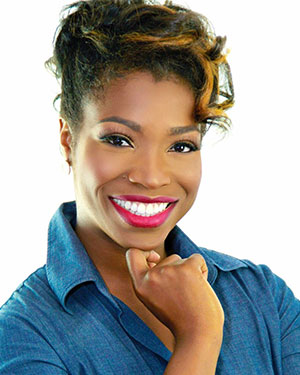
Uchenna Emenaha
Ph.D. Curriculum & Instruction in Science Education, University of Houston
Uchenna Emenaha obtained her Ph.D. in science education from the University of Houston. She currently is an instructor in the teachHOUSTON Program teaching preservice STEM teachers. Her areas of research interest are STEM Education, Science Education and Social Justice Education. Prior to joining the teachHouston staff, she spent nine years teaching middle school and high school science. She is also a health enthusiast who teaches Zumba Fitness classes in her spare time and volunteers with Houston Health and Black Business Expo. She loves science and is passionate about sharing her love of science with students of all ages.
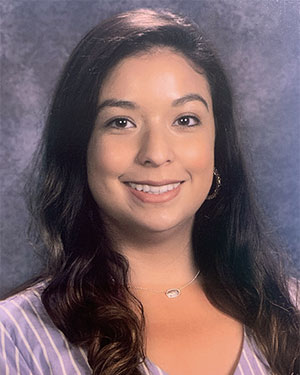
Arianna Ibarra
Biology with teachHOUSTON
Arianna is a 2018 graduate of the University of Houston. She obtained her degree in Biology and is also an alumna of the teachHOUSTON Program. She is currently a Biology teacher at South Houston High School and is pursuing her master’s degree in STEM Education through Texas Tech University. This is Arianna’s third summer to participate in STEM camps at UH, and she is excited to work with students and teachHOUSTON undergraduates as a camp leader. In her free time, Arianna enjoys attending baseball games for the Houston Astros-Go Astros!
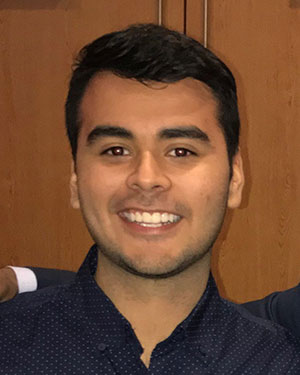
Ricardo Pocasangre
Biology with teachHOUSTON
Ricardo is a senior at the University of Houston majoring in Biology. Upon graduating, he wants to become a high school science teacher. He loves to study the stars and spends time looking into the sky with his high-powered telescope. He is excited to be working with you this summer!
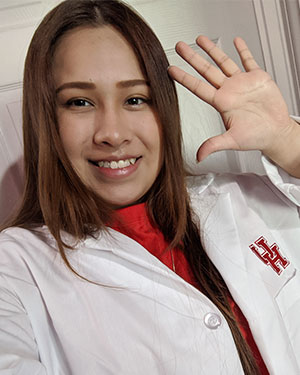
Frida Villalobos
Biology with teachHOUSTON
Frida is currently a student at the University of Houston majoring in Biology. She aspires to be a biology professor, who not only teaches, but also studies in a laboratory setting. She loves science, coffee, and meeting new people and hopes to one day open a science-themed coffee shop! In her free time, she enjoys reading books, listening to music, or watching a show on Netflix.
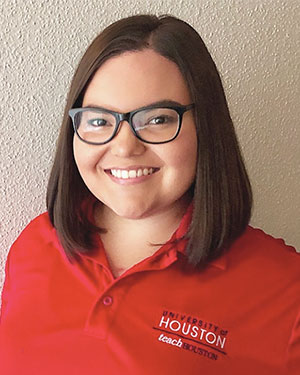
Fernanda Marrero Hi
Biology with teachHOUSTON
Fernanda is a senior at the University of Houston and very active in the UH community. She is a Hispanic Scholarship Fund Scholar, Noyce Scholar, Charles Butt Scholar, and President of the teachHOUSTON Student Society. She is invested in the advancement of public education and advocates for social justice in and out of the classroom. Her ultimate goal is to be a public school teacher or an administrator. During her free time, she enjoys reading and playing her Nintendo Switch.
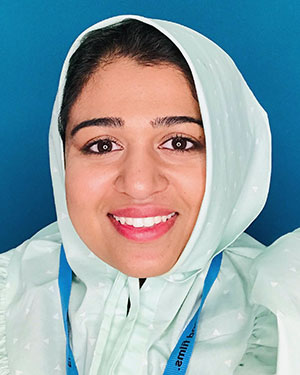
Khadija Juzar Lokhandwala
Biology with teachHOUSTON
Khadija is a junior at the University of Houston majoring in Biology and minoring in Business Administration. She loves to teach and hopes to one day complete her Ph.D. and become an Anatomy and Physiology professor. She is passionate about increasing female participation in STEM. An artist at heart, in her free time she likes to draw, create fun looks with makeup, and play sports.
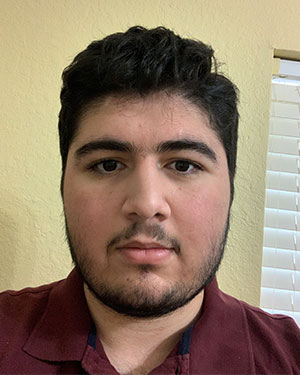
Sajjad Razzaq
Biology with teachHOUSTON
Sajjad is a biology major who loves learning about health and science. He aspires to be a health science educator or a doctor upon graduation. He loves to play video games and likes to draw in his free time. He believes that learning should be fun and is excited to be a part of the virtual summer camp with the teachHOUSTON Program.

Liandra Larsen
teachHOUSTON STEM Interactive Video Editor
Liandra is a Research Graduate Assistant for the teachHOUSTON Program. Currently, she’s pursuing her Ph.D. in Higher Education Leadership and Policy Studies at the University of Houston. Her research interests include improving the university experience for first-generation and transfer students. In her spare time, she enjoys dancing, binge-watching shows on Netflix, and overspending at Target.